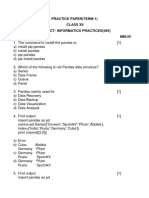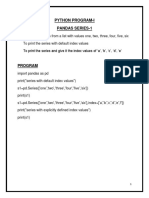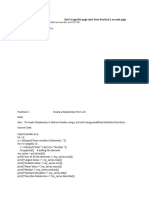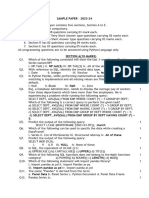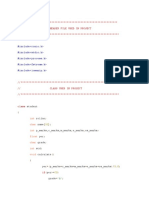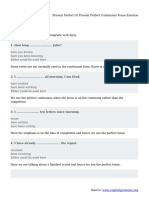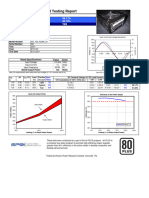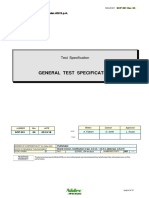0% found this document useful (0 votes)
202 views11 pagesMCQ On Dataframe
The document contains 22 multiple choice questions about Pandas DataFrames. The questions cover topics such as the purpose of various DataFrame attributes like index, ndim, size, and axes. They also cover operations like selecting columns and rows, transposing DataFrames, sorting values, and renaming/adding columns. The answers provided indicate the correct option for each question regarding Pandas DataFrame syntax and methods.
Uploaded by
dipu giriCopyright
© © All Rights Reserved
We take content rights seriously. If you suspect this is your content, claim it here.
Available Formats
Download as PDF, TXT or read online on Scribd
0% found this document useful (0 votes)
202 views11 pagesMCQ On Dataframe
The document contains 22 multiple choice questions about Pandas DataFrames. The questions cover topics such as the purpose of various DataFrame attributes like index, ndim, size, and axes. They also cover operations like selecting columns and rows, transposing DataFrames, sorting values, and renaming/adding columns. The answers provided indicate the correct option for each question regarding Pandas DataFrame syntax and methods.
Uploaded by
dipu giriCopyright
© © All Rights Reserved
We take content rights seriously. If you suspect this is your content, claim it here.
Available Formats
Download as PDF, TXT or read online on Scribd
/ 11

















